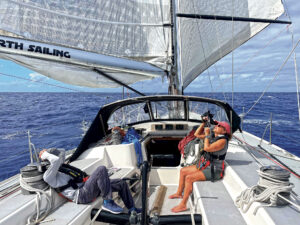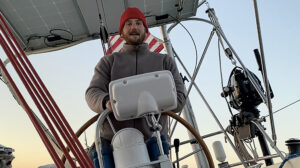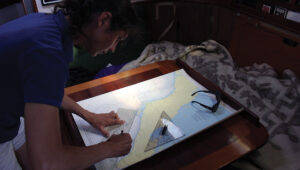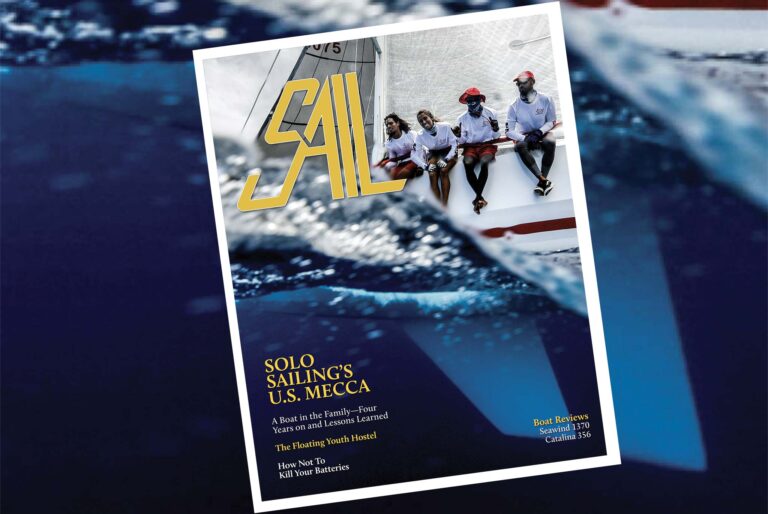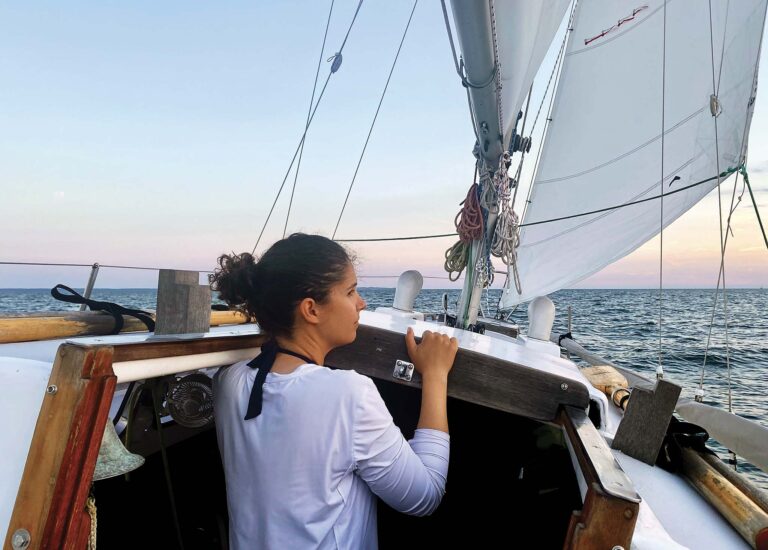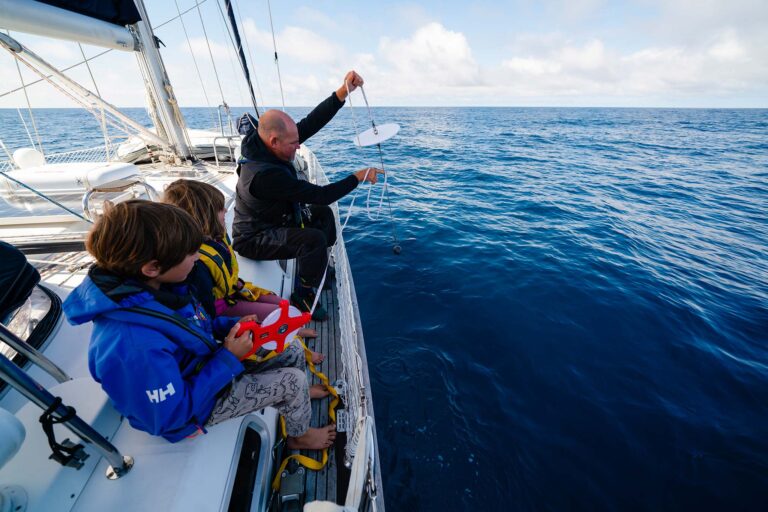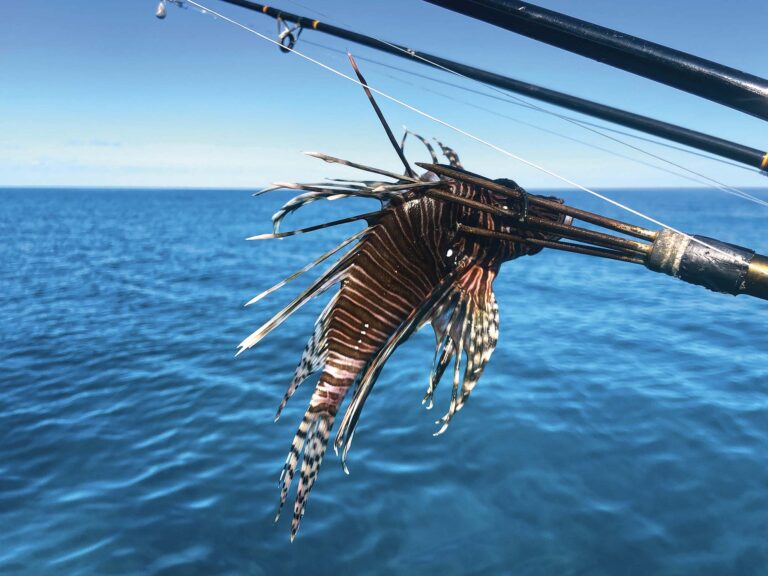
Here are some things to consider if you’re looking for a bluewater cruiser to point toward the horizon
When it comes to choosing a cruising boat, aspirations have altered beyond recognition in my lifetime. My first ocean sailing yacht was a wooden Norwegian pilot cutter, 60 years old in 1972. She was cheap, but I chose her because of the legendary sea-keeping qualities of her type. With my wife, we voyaged from the UK to Brazil, then home again via the Caribbean, the eastern United States and Nova Scotia. Her engine was so unreliable that I gave up on it in Rio and sailed her without power or electricity most of the way home. We navigated entirely by sextant, a chronometer and the wheeling stars. I was so comfortable with this that nothing changed on my boats until the mid-1990s, when I bought a GPS receiver. Refrigeration, pressurized hot water, chartplotters and computers were unheard of on any of my boats until now. We managed fine without. So can you, if you so choose.

Times have changed, and I’ve moved on to a different sort of yacht, a fiberglass boat built in 1987 with a long keel, a powerful diesel, big tanks, metal spars and stainless rigging. Although I tossed the aircon, the microwave, the remains of a redundant watermaker and the TV overboard as soon as I took delivery, she still has all sorts of modern conveniences.
I can’t believe any future generation of sailors will see such dramatic progress. The contrasts have given me a sharp perspective on what genuinely improves life and what ends up causing more bother than it’s worth.
Choosing a boat
The sailing world abounds with advertisements for craft whose spectacular performance is only equaled by comfort and security at sea. Wouldn’t that be nice! The truth is that nothing on the ocean is given for free. A boat that really can take care of herself in hard weather, long after her crew have given up from sheer exhaustion, is unlikely to go to windward in flat water as well as one that’s been designed for the bay in summer with close-windedness and space below as the priorities. The smiling sailors in the ads are usually powering along in 15 knots of breeze, having a grand day out. The smiles disappear, though, when the boat is being knocked around in a big broken sea with the autopilot disabled, the rolled genoa useless and the deep-reefed mainsail overpowered. The bottom line is to define your objectives honestly. No boat is all things to all sailors. The passport to success is to find one that suits your character as well as she fits the job you plan for her.

Hull considerations
Seaworthiness
Even if you’re planning a tradewind trip with no heavy weather on the menu, sooner or later you’ll be caught out. Unlike the coastal sailor armed with modern forecasting who can generally scuttle away and hide, the deep-water mariner has nowhere to run. We have to take what’s coming on the chin, so the chosen boat must be able to look after herself. In my experience, the time comes in a prolonged storm when short-handed crews are just too beaten up to stay on deck any more. Can the yacht you’re looking at cope on her own if her autopilot crashes? Imagine her hove-to in a 30ft sea. It may never happen, but it sometimes does, and if this thought suddenly makes her look less attractive, cross her out and seek elsewhere.

A boat with a fin and spade underwater configuration won’t be able to heave-to without the assistance of some sort of para anchor or drogue. She might make fast passages, but if her rudder clobbers some submerged debris it is notoriously vulnerable. Most rudder failures are on this type of boat. A fin and skeg profile supplies a stronger rudder and slightly more boat in the water. This increases displacement and gives a better chance of heaving-to.

Any boat with a rudder detached from the keel and sited right at the stern will, theoretically, steer better than one with the rudder on the trailing edge of the keel, closer to the pivot point of the hull. This doesn’t work out in practice, however, because boats with long keels are usually less beamy and have easier sections. They are thus not subject to violent changes in balance when they heel to a gust or a passing sea, and so the helm is more stable, if less powerful. Autopilots love well-designed, long-keeled yachts. They hate beamy boats that tend to round up in gusts of wind. A further hidden “plus” of long keels is that their rudders are the best supported of all. It is rare for a long-keeler to become disabled by rudder loss.

Comfort
This divides into two distinct areas. What makes for comfort in harbor often militates against it at sea. But then, most bluewater cruisers spend far more time at anchor than they do on passage, so it’s up to you to decide which matters more. Comfort in harbor is obvious. You can go aboard at any boat show and see for yourself what might work. To predict what’ll happen at sea needs more imagination. I’ve crossed oceans on boats where there was nowhere to sit and eat your dinner once the bouncing started. I’ve seen all hands having to bed down on the cabin sole because the sexy curved saloon dinette and fancy armchairs were useless as sea berths. Meanwhile, the monster double bed aft kept ejecting its occupants and nobody could face the extreme motion in the V-berths right up forward. I took what ease I could on a sail bag under the chart table. Cozy, but less than ideal.
Usually, some compromise is the answer, but you absolutely must have an appropriate number of decent sea berths.
Cockpits
This is another area where it pays to make an active and informed decision. Coamings are primarily for keeping people in, not for sitting on. If they can achieve both, so much the better, but not at the cost of security.
An aft cockpit is generally preferable to a center perch, because it is lower down and therefore safer. It is also farther from the action up forward and, being sited aft, suffers less from the motion of the boat. Without having a huge yacht it is perfectly possible to have an aft cockpit and an aft cabin too by offsetting the companionway. These are theoretically prone to downflooding when on the “low” side in a knock-down, but in the awful conditions where this might be in the cards, anyone possessing a Darwinian share of survival genes would have the washboards in anyway.

Some cockpits work beautifully in harbor, but are downright dangerous at sea. If the cockpit is too wide to brace your feet on the other side, it absolutely must have some means of stopping people from being tossed across and onward over the side, such as a stout cockpit table folded down. Without this, a lovely roomy harbor cockpit can turn into a death trap in rough weather.
[advertisement]You’re going to be spending a lot of your life in the cockpit, either at sea or in the harbor, so make sure you are totally satisfied it will serve you well in both situations.
Rigs and Sailplans
Most modern bluewater cruisers are sloops or cutters. It beats me (aged 68) why anyone would specify in-mast furling. The weight’s all in the wrong place, and if it goes wrong far from help the consequences may be dire. I know many sailors have gone long distances with in-mast furling mains, but they don’t make life any easier than the better alternatives.
By contrast, a good slab-reefing system is just about bomb-proof. Worked from the cockpit with no nonsense about single-line reefing and backed up with a stack pack, it makes handling the main a breeze. Quality in-boom arrangements such as Leisure Furl offer a sensible answer if you really don’t want to leave the cockpit, even to stow the sail.
If you’re opting for a standard production boat, you should stay away from genoas at 135 percent or bigger. You’ll be reefing a lot and by the time these monsters have been wound in to anything like a working area they have lost all their shape. Start at a well-cut 110 percent, and you’ll never be sorry.
If there’s the option, go for a cutter every time. Use the genoa in light and moderate winds, then roll that sucker up and unfurl the staysail when the chips are down. If you’re stuck with a sloop you’ll have to make arrangements for a storm jib.

Ground Tackle
The blue-water boat spends as much of her time anchored as the weekender does in her marina berth. You don’t worry at home when the gale blows up at midnight, knowing the yacht is snug in her slip. Neither should you have a care in a good anchorage when you hear the rigging start to roar in the small hours. To be blunt, the ground tackle sold with production boats is usually a joke. Look at any successful deep-water yacht and you’ll see at least one serious anchor on the roller, backed up by a long length of the heaviest chain the boat can carry. For everyday work, a 40-footer needs at least 45 fathoms of ⅜in chain, plus a modern anchor weighing in at a minimum of 55lb. A stout windlass is an absolute must, so handling this lot presents no issues. Lay out a long scope, dig the hook in carefully and sleep easy.
[advertisement]
If your yacht is too light to stand the ¼ton weight of ultimate safety, get rid of her and buy a more suitable one, because it doesn’t end here. You’re also going to need backup anchors, lots of spare rode and maybe a storm hook tucked away in the bilge for that far-off day when you know the world is going to go mad…

Navigation
It’s not for nothing that the US Navy is now insisting that cadets be trained in basic celestial navigation. The concern is that some cybercriminal may find a way of shutting down the satellites and with them, all our chart plotters and fixing systems. If the Navy is taking this seriously, then so should we. Anybody sailing beyond dead reckoning range of land without sextant, tables, an accurate watch and the ability to use them deserves to be lost.
Charts
In 2015 a yacht in the Volvo Race piled up on an Indian Ocean reef that was longer than Catalina Island. At the zoom scale in use on the boat’s vector chart, it did not show up at all. Shock waves rattled through the sailing world, but folks in the know understood that it was not an isolated incident.
In a nutshell, vector charts are seductive and certainly useful, but they do not supply all the answers, especially in remote places, and they can let you down. Paper charts are far more reliable. The paper chart of the whole Indian Ocean shows the reef that wrecked the race boat. If they’d had it on the table, they’d have swished by safely.
Carrying paper charts for all the oceans of the world has always been a major problem in terms of money and space, but raster-scan equivalent charts take up no room at all. Rasters are effectively a scan of a paper chart, complete with critical notes on evaluating survey data, warnings, and the rest of the vital information generally missing from vector charts. The further a boat sails from continental home waters, the more important this material becomes. NOAA puts these charts out FOC. Not to download a complete set for your voyage and use it, either for preference as I do, or at least alongside the vector charts, is, not to mince words, pure madness.

Systems
Water
It’s possible to live adequately with very little water. My first boat carried 45 gallons. We made a number of passages of over four weeks and never went short. That said, my Mason 44 packs 150 gallons and the 40ft (heavy displacement) yacht I sold five years ago boasted one glorious ton of the freshest. It was “fill-and-forget” with her. Depending on where you plan to cruise, though, even this may not be enough. Having to come alongside for water in dubious locations can be undesirable, while staggering across steaming-hot parking lots loaded down with 5-gallon cans from a source you have heard bad stuff about is a misery anyone can do without. If this seems likely to be your lot, treat yourself to a watermaker.
AC Watermakers
If you have an AC generator and an AC-driven holding-plate fridge, you’ll be running the genset for upwards of two hours per day to keep this and your batteries up to snuff. Operating the pump necessary for an AC watermaker won’t inconvenience the system at all. It will draw 25 AC amps or so, but it will deliver well over 20 gallons in an hour. If your crew is using more than 40 gallons a day, it’s time you paid them off.

DC Watermakers
These have improved by leaps and bounds, making a quality 12V unit a serious proposition. The cost to the ship is modest with the best units now claiming 12 gallons or a bit more for 20 amp hours.
Refrigeration
The same goes for DC refrigeration as for watermakers. These babies are just so much better than they used to be, although on a family boat they will still draw anything up to 80 amps per day that somehow has to be shoved back into the batteries. A holding plate fridge charged either by a main engine compressor or an AC generator-driven unit has a lot going for it by comparison.
What it all comes down to is power.

Charge of the Light Brigade
There’s something inherently beautiful about a clean, green, self-sufficient yacht that is capable of charging the fridge, watermaker, lights and computers solely by the wind, sun or towed water power. Out in the tropics, solar power is growing, with bimini tops a favorite site for a bank of panels. Wind power is a winner in the trades, while towed water generators are the most powerful of all, costing surprisingly little in terms of lost boat speed.
[advertisement]
Communications
This is the biggest change in my lifetime. Back in 1975 you might not be heard from for months. If we had suffered a major mishap, there was no help coming. We were on our own. Today, people are merrily blogging their way around the planet, instant medical advice is a phone call away, and rescues are organized in short order from the most remote spots imaginable.
The heart of most boat communications is the onboard computer and how this is hooked up to the sky. On popular cruising grounds, internet access can often be found. At sea or in remote venues, this isn’t going to happen, so unless you’re ready to spring for a highly expensive system, connecting to the web may come down to either a satellite phone or SSB radio.
A number of satellite systems are currently available with Iridium as a frontrunner. More, better and cheaper methods of communication are being developed, but in 2016 satphones are still generally favored by rally participants and sailors on sabbaticals. It’s easy to install but less fun to pay for.
In spite of the rise of satphones, SSB is not dead or even nearing death, and it remains the top option for most free-ranging long-term cruisers, with “cruise nets” supplying all sorts of gossip and technical backup opportunities for aficionados.
As with everything on a bluewater boat, it’s better to install the comms hardware personally so you’ll know what to do in the event of difficulties. If you feel disinclined to acquire the necessary expertise, there are specialists out there whose working lives are dedicated to solving installation problems.
The last word on basic internet communication should go to SailMail, a non-profit organisation that, for a modest price, will make email and basic weather data, etc., work for you with SSB or satphone. If you are starting from scratch, its comprehensive internet site info can help you decide what’s realistic for your budget.
Find SailMail via any good search engine.
What appears in this article is only a scratch on the surface of the needs of today’s deepwater boat. I haven’t mentioned EPIRBs, PLBs, safety gear in general, entertainment, pilot information, AIS, dinghies and the hundred other things that are best either beefed up or bought afresh. There’s enough there to fill a book, and I should know because I just wrote one. Grab it, or one of the other fine books on the subject, and get reading.
CAPABLE BLUEWATER BOATS:

Hylas 56

Outbound 46

Amel 55

Island Packet 460

Lagoon 380

Passport Voyager 480
Tom Cunliffe sails his Mason 44 in the North Atlantic and Baltic. His new book, The Complete Ocean Skipper, will be available later this year
February 2016


